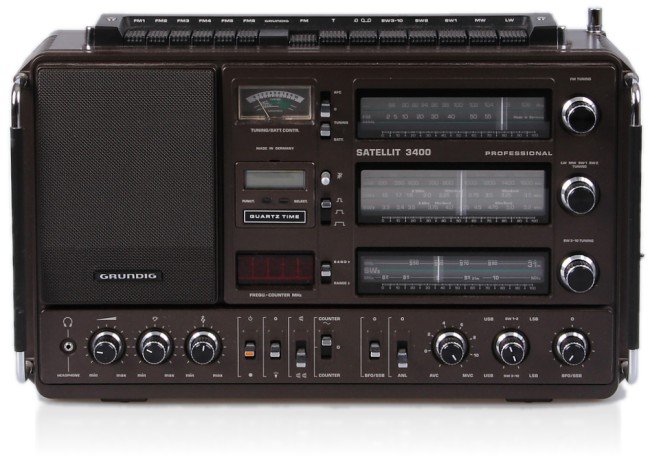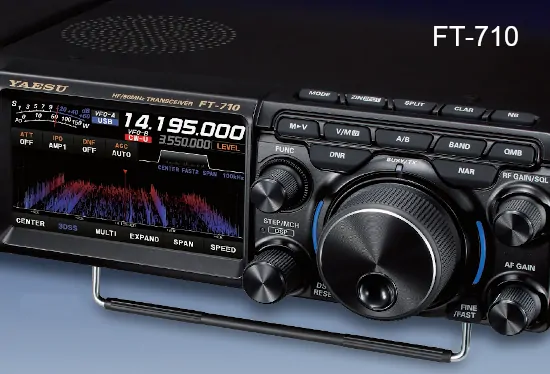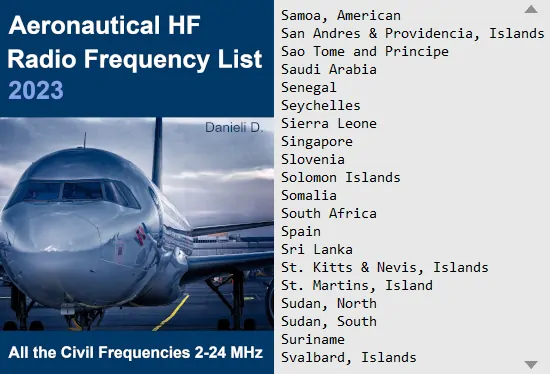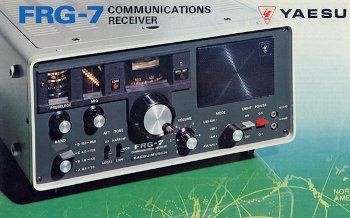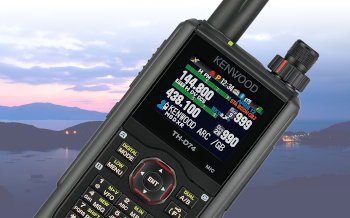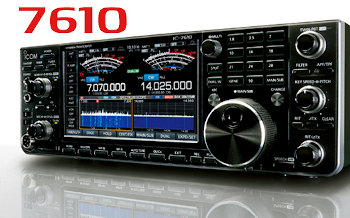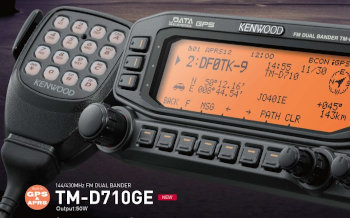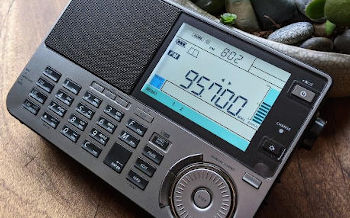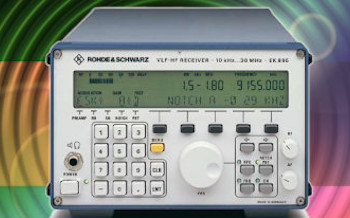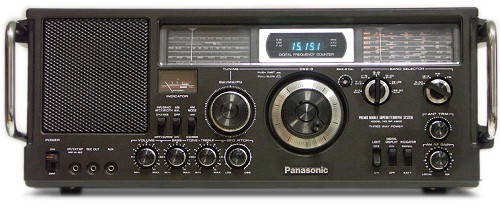
Desktop / portable receiver with FM, Medium Wave, Short Wave 1.6~31 MHz in eight adjacent bands. AM and SSB, selectable IF bandwidth. Ideated in Japan, year of introduction 1976.
Reference market : consumer / amateur-radio
RF-4800 specifications
| General |
| Frequency coverage | |
|---|---|
| 0.5250 ~ 1.6050 MHz (MW)
1.6000 ~ 31.0000 MHz (SW) 88.0000 ~ 108.0000 MHz |
|
| Mode | |
| SSB / AM / WFM |
| Receiver |
| Sensitivity | |
|---|---|
| AM | 1.0 uV (1.6~3 MHz, 10dB S/N)
1.3 uV (3~7 MHz, 10dB S/N) 0.8 uV (7~11 MHz, 10dB S/N) 1.2 uV (11~23 MHz, 10dB S/N) 1.3 uV (23~31 MHz, 10dB S/N) |
| Selectivity | |
| AM-N / SSB | 3.4 KHz (-6dB)
12 KHz (-60dB) |
| AM-W | 5.0 KHz (-6dB)
15 KHz (-60dB) |
| WFM | 400 KHz (-35dB) |
| Image rejection [1] | |
| 40 dB (1 MHz)
30 dB (2.3 MHz) 65 dB (5 MHz) 60 dB (9 MHz) 55 dB (13 MHz) 50 dB (17 MHz) 45 dB (21 MHz) 35 dB (25 MHz) 35 dB (29 MHz) |
|
| Frequency stability | |
| < 500 Hz after 30' warm-up (3~31 MHz) | |
| IF (Intermediate Frequency) | |
| 1° | 10.7 MHz (FM)
2 MHz (3~31 MHz) 455 KHz (MW / 1.6~3 MHz) |
| 2° | 455 KHz (3~31 MHz) |
| Features |
| Display | |
|---|---|
| 1 KHz frequency resolution (SW) | |
| Power supply | |
| 110 VAC
12V batteries (8 x D) |
|
| Power consumption | |
| 10 W with AC power adapter | |
| Audio power | |
| 2 W | |
| Connections | |
| Jack 3.5 mm (headphone)
Jack 3.5 mm (recorder line) Jack 3.5 mm (aux line) 75Ω (MW and SW 1.6~3 MHz antenna) 75Ω (SW 3~31 MHz antenna) 300Ω (FM antenna) |
| Mechanical and environmental data |
| Dimensions | |
|---|---|
| 482 (W) x 200 (H) x 354 (D) mm | |
| Weight | |
| 9kg with batteries |
- 1° IF referenced.
The Panasonic RF-4800 receiver, also distributed as Panasonic DR-48, covers the entire spectrum of medium and short waves up to 31 MHz. It is a portable device, according to the canons of the time, and for fixed use resulting in many details to ensure good performance when listening to AM and SSB stations. As a general trait, it combines mechanical tuning with a reading frequency meter with a nixie display. this model Panasonic in particular adopts a double adjustment knob, each dedicated to a group of bands, which correspond to different tuning-dials. Furthermore, for most of the short waves, bands SW2~8, the tuning mechanics adopts a double stroke to have a coarse control in the pressed position (push) and fine control in the raised position (pull). Given the wide receiver range, the short wave segment between 1.6~31 MHz is divided into eight bands so as to ensure a reasonable ease in setting the listening frequency. These divisions for the sub-bands:
| Band / Frequency coverage | |
|---|---|
| SW 1 | 1.6 ~ 3 MHz |
| SW 2 | 3 ~ 7 MHz |
| SW 3 | 7 ~ 11 MHz |
| SW 4 | 11 ~ 15 MHz |
| SW 5 | 15 ~ 19 MHz |
| SW 6 | 19 ~ 23 MHz |
| SW 7 | 23 ~ 27.3 MHz |
| SW 8 | 27 ~ 31 MHz |
As you can see, there is an excellent balance in the subdivision of the different sub-bands that even in the upper part of the HF are not wider than about 4 MHz, this aspect qualifies in a positive way the RF-4800. Among other features we find the possibility of selecting two different bandwidths of the IF filter for the AM, always staying at the AM there is a precise control of the RF gain and the ANL (Automatc Noise Limiter) function to reduce the impulsive noise.
With reference to the front panel on the left is the speaker space, capable of extended reproduction of sound in low tones, with below the switch for switching-on and three jacks for external audio connections. Moving to the right, starting from the top, there are two tuning-dials with the digital frequency meter in the middle. The left scale is dedicated only to the FM, MW and SW1 bands, and the relative tuning is controlled by the knob located below it. The right-hand scale is dedicated to all short-wave bands SW2 ~ 8, in this case the relative tuning is controlled by the large knob located at the center of the receiver.
Continuing in the front left side we find a dual function indicator instrument, it allows to quantify the battery charge or the intensity of the signal received according to the S-scale of nine points. Below three deviators allow respectively to activate the AFC (Automatic Frequency Control) for the FM or select the IF filters for the AM, activate the ANL, select between AM / SSB mode. Directly below four rotary controls allow you to adjust the audio volume, the bass and treble response, lastly vary the frequency of the BFO so as to better center an output in SSB or to set the audio note demodulating a CW signal. By moving the adjustment of this last potentiometer almost entirely clockwise / counterclockwise, selectivity is set to be optimal for discriminating between USB and LSB. Turning to the right of the front panel first there are two multi-position switches for band selection, below there is a trimmer that acts as an impedance adapter for the short-wave antenna. Even more below three deviators allow respectively to activate the lighting of the tuning-dials, turn on or off the digital frequency display, select the function of the instrument. Lastly there is the gain control for the RF stages.
RF-4800 performance and practical notes :
This Panasonic expresses an undoubted physical presence, is in its own way a colossus that occupies a width of almost 50 centimeters. Set above a table, it represents an excellent old time radio charm, even for the type and arrangement of the controls and their functions. From the point of view of the period, the general behavior is clearly positive. The good sensibility, even if naturally today is correct to define it forcibly mediocre, united to the subdivision of the HF in more segments offers ample possibilities of reception of the signals CW/SSB without the patemi that characterized similar radio sets.
Over the years several DXers have confirmed the quality, so it is a radio that has maintained over time its intrinsic technical value beyond that eminently vintage. It should be noted that an input preselector tuned in parallel to the tuning reduces the problem due to the first conversion in the short waves or the presence of image responses - it is clear that the phenomenon is however heavily present but in a lesser form than other receivers. A lack in the project is instead the digital frequency meter that does not work on medium waves and on the SW1 band, below 3 MHz so only the tuning-dial provides indications that therefore result in poor resolution.
RF-4800 price
We have collected for your convenience the Panasonic RF-4800 sale price (US Dollar) and its trend over time. Useful to guarantee a cheaper purchase of this radio and to put it for sale in the second-hand market. Of course offers, accessories, warranty terms and conditions can lead to different figures.
|
|
|
|
|
USD 176.00 (150EUR) |
2021-sep |
Second Hand Working, with some signs of deterioration due to use |
| USD 150.00 | 2018-nov | Second Hand |
|
USD 156.00 (200CAD) |
2018-nov | Second Hand |
RF-4800 review
| Sensitivity | |
| Selectivity | |
| Dynamic range | |
| Spurious response | |
| Audio | |
| Signal functions | |
| Control functions | |
| User friendly | |
| Stars: 1=insufficient | 2=just sufficient | 3=mediocre | 4=good | 5=excellent | |
Your opinion on merits, defects, experiences, with this radio set is welcome. Write your review, after a technical evaluation by our staff if found suitable will be published on this page. We thank you for your precious contribution.
